#HealthCommunication
Explore tagged Tumblr posts
Text

How can you inform your partner anonymously about the risk of STDs?
Talking about STDs with a partner is incredibly hard, but undeniably crucial for everyone's health. 💔➡️❤️🩹 What if fear or shame holds you back from that vital conversation? Sometimes, you need a way to deliver important health information safely and give them a chance to get tested. Our new blog post explores how anonymous texting can be a responsible first step in these delicate situations. It's about protecting health when direct words fail. Read our guide on navigating this sensitive topic: https://www.anonsms.com/blog/how-to-anonymously-text-your-partner-about-an-std/ Remember, you're not alone, and their health matters.
#SexualHealth#STD#HealthCommunication#ToughConversations#Relationships#AnonymousText#AnonsmsBlog#TellYourPartner#SafeSpace
0 notes
Text

Make Animated Videos for Patient Education: 10 Tips for Simplifying Medical Concepts
Struggling to explain complex medical info to patients? Animated videos are a fantastic way to make those tough topics easier to understand and more engaging! From using simple language to incorporating visuals and storytelling, these 10 tips will help you create educational videos that actually connect with your audience. Whether you’re a healthcare provider, educator, or content creator, mastering these strategies can improve patient comprehension and promote better health outcomes.
Want to make your medical content clear, memorable, and patient-friendly? Check out these 10 tips and start creating animated videos that simplify even the most complicated concepts.
✨ Don’t miss it—your patients will thank you! ✨
#PatientEducation#MedicalAnimation#HealthCommunication#AnimatedVideos#MedicalIllustration#HealthcareTips#MedicalEducation#SimplifyMedicine#PatientCare#HealthLiteracy
0 notes
Text
Hi everyone,
If you're involved in healthcare management, patient care, or medical administration, improving patient experience is something you definitely want to focus on. The Excellence in Patient Experience & Involvement course is designed to equip you with the skills and knowledge needed to transform the patient experience in healthcare settings, ensuring a higher level of patient satisfaction and better outcomes.
Why This Course is Essential:
Improved Patient Satisfaction: Learn how to enhance patient experience using effective communication, relationship-building, and leadership techniques.
Patient-Centered Culture: Discover how to build a patient-centered culture that engages employees and fosters exceptional care for patients.
Innovative Patient Experience Frameworks: Use Planetree and experience-based design methods to identify strengths and improve patient care systems.
Diversity & Cultural Competence: Gain insights into cultural diversity and learn how to respect diverse patient needs and preferences to improve decision-making in care.
Practical Experience: The course includes a field visit to a public hospital, where you’ll observe how healthcare professionals impact patient satisfaction daily.
Key Skills You’ll Gain:
Effective Communication: Master both verbal and written communication skills to ensure your patients feel heard, valued, and well-informed.
Leadership for Patient-Centered Care: Learn leadership strategies to foster a coaching culture within your healthcare organization.
Feedback Collection: Learn how to measure patient satisfaction effectively through surveys and feedback, and use this data to improve care.
Marketing & PR Campaigns: Discover how to promote patient-centered care through targeted marketing campaigns that enhance community engagement and raise awareness.
This course will give you the tools to transform patient care, build stronger relationships with your patients, and create a compassionate and efficient care environment.
For more details and to register, check out the full course here: Excellence in Patient Experience & Involvement
Have any thoughts or questions on improving patient experience? Let me know in the comments—I’d love to hear from other healthcare professionals!
#PatientExperience #HealthcareManagement #PatientCare #MedicalAdministration #HealthcareLeadership #PatientSatisfaction #CulturalCompetence #PatientCenteredCare #HealthcareTraining #MedicalEducation #HealthCommunication #PatientFeedback #HealthcareProfessionals #PublicHospital #Planetree #ExperienceBasedDesign #HealthcareMarketing #PRInHealthcare #PatientEngagement #HealthSystems #HealthcareExcellence #TransformingCare
#PatientExperience#HealthcareManagement#PatientCare#MedicalAdministration#HealthcareLeadership#PatientSatisfaction#CulturalCompetence#PatientCenteredCare#HealthcareTraining#MedicalEducation#HealthCommunication#PatientFeedback#HealthcareProfessionals#PublicHospital#Planetree#ExperienceBasedDesign#HealthcareMarketing#PRInHealthcare#PatientEngagement#HealthSystems#HealthcareExcellence#TransformingCare
0 notes
Text
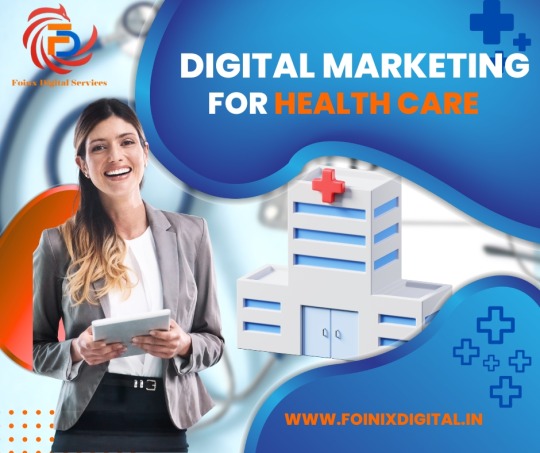
Digital marketing for healthcare helps hospitals, clinics, and doctors connect with patients online. Using SEO, social media marketing, and paid ads, healthcare providers can reach the right audience. A strong healthcare digital marketing strategy builds trust, improves patient engagement, and boosts visibility. Grow your practice with effective online marketing for healthcare! ----------------------------------------- DM Us for Local SEO, Social Media Marketing, Paid Advertising, and Other Digital Marketing Services. For More information about our Digital Marketing Services Book a free consultation today!! Call: +91-9441100849 Mail: [email protected]
#DigitalMarketing#Health#Hospitals#Clinic#HealthcareMarketing#MedicalPractice#HospitalManagement#Wellness#Telehealth#HealthTech#PatientEngagement#HealthcareInnovation#MarketingForClinics#HealthCareProfessionals#HospitalMarketing#ClinicGrowth#HealthcareContent#HealthCommunication#DigitalHealth#seo#SEOExperts#socialmedia#socialmediamarketing#doctors
0 notes
Text
How Cognitive Structure Shapes Patient Communication & Therapeutic Outcomes | PT Pro Talk Podcast
youtube
Understanding how cognitive structure influences learning led me to a bigger question—how does it affect communication with patients? Using back pain as an example, I explore how my perspective as a practitioner might differ from a patient's and whether aligning our mental maps can improve therapeutic outcomes. Does it matter if we see the issue differently? Let's dive into the impact of cognitive structure in healthcare.
#cognitivescience#healthcommunication#therapeuticoutcomes#patientcare#learningtheory#mindmaps#healthpsychology#Youtube
0 notes
Text
The Key to Effective Healthcare: Building a Relationship with Your Doctor
In the fast-paced world of healthcare, it’s easy to overlook the importance of building a solid relationship with your doctor. However, cultivating a good rapport can have lasting benefits for both you and your healthcare provider. Having open communication and trust with your doctor can lead to better care, more personalized treatment plans, and improved outcomes.
Why Building a Relationship with Your Doctor Matters
Healthcare is not just about treating symptoms; it's about understanding the whole person. When you develop a strong relationship with your doctor, they get to know you—your medical history, lifestyle, and personal health goals. This deeper understanding allows for better, more accurate diagnoses and treatment options tailored to your unique needs. Additionally, having a trusting relationship encourages you to be more open and honest about your health concerns.
How to Build a Strong Relationship with Your Doctor
Be Honest and Open The foundation of any good relationship is communication. When it comes to your health, it’s crucial to be transparent with your doctor. Don’t hide or downplay any symptoms, concerns, or behaviors. Your doctor is there to help you, not judge you. The more honest you are, the better they can assist you in managing your health.
Make Regular Visits Consistency is key. Don’t wait until you’re sick or in pain to see your doctor. Regular check-ups help maintain your health and allow your doctor to notice any changes or emerging issues early. Consistent visits also provide an opportunity to build rapport over time.
Ask Questions Your doctor is there to guide you, but you need to be proactive in understanding your health. Ask questions about any aspect of your treatment, diagnosis, or prevention strategies. A good doctor will appreciate your curiosity and will take the time to answer your questions thoroughly.
Respect Their Time Doctors have busy schedules, so be punctual for your appointments. If you need to reschedule, try to give plenty of notice. Respecting their time ensures that you maintain a professional relationship while also showing that you value their care.
Follow Through on Recommendations Your doctor can only do so much during your appointment. If they suggest changes to your lifestyle, new medications, or further tests, follow through. This shows that you trust their expertise and are committed to your health.
The Benefits of a Strong Doctor-Patient Relationship
Personalized Care: With a deeper understanding of your health, your doctor can tailor your treatment plan to suit you better.
Better Communication: When you trust your doctor, you’re more likely to communicate openly, which results in more effective care.
Improved Health Outcomes: Studies show that patients who have a strong relationship with their doctor often experience better health outcomes, as they are more engaged in their treatment and follow-ups.
Emotional Support: A caring doctor can provide emotional comfort during difficult times, from serious diagnoses to recovery periods.
Building a relationship with your doctor isn’t just about getting treatment; it’s about building a partnership in managing your health. When you feel heard, understood, and supported, you are more likely to make informed decisions and stick with the treatment plans that work best for you.
Conclusion: The Long-Term Value of Investing in Your Doctor-Patient Relationship
Healthcare is a lifelong journey, and the bond between you and your doctor is crucial for navigating it successfully. By making the effort to communicate openly, show up consistently, and respect each other’s time, you set the stage for a relationship that can improve your health for years to come. Investing in this relationship is a step toward better overall well-being, offering you not only medical support but also a sense of partnership in your health journey.
Read more: Building a relationship with your doctor
#DoctorPatientRelationship#HealthcareTips#BuildingTrust#HealthCommunication#PersonalizedCare#DoctorVisit#HealthJourney#BetterHealthcare#PatientCare#HealthyLiving#TrustYourDoctor#PreventativeCare
0 notes
Text
Malicious Bots Undermine Public Health Communication During COVID-19

Source: news-medical.net
Bots and Disinformation Surge Amid Pandemic Response in Finland
During the COVID-19 pandemic, the public information landscape in Finland saw unprecedented challenges as disinformation reached new heights. With an urgent demand for accurate health information, official sources aimed to provide clarity amid a rapidly changing situation. However, social media added significant complexity to this effort. A recent study found that malicious bots—automated programs designed to mimic human users—became particularly aggressive during critical pandemic moments, such as vaccine rollouts and major health advisories. The study analyzed 1.7 million tweets related to COVID-19 on Twitter/X in Finland over three years, revealing that bots contributed 22% of these messages, a marked increase from the usual 11% bot presence. Of the bot accounts identified, over a third (36%) engaged in malicious activity, spreading misinformation and fueling vaccine skepticism. Approximately 460,000 of the tweets contained inaccurate information, with a similar portion expressing negative views toward vaccinations.
Bots Exploit Public Health Channels to Amplify Misinformation
According to the study, malicious bots specifically targeted official communication channels, such as the Finnish Institute for Health and Welfare’s (THL) Twitter, to spread misleading information without directly attacking THL. By tagging other accounts in 94% of their tweets, these bots amplified their reach, skillfully adapting their content to evolving COVID-19 circumstances. This tactic enabled them to infiltrate conversations and sow doubt in a variety of online discussions, particularly regarding public health measures and vaccines. The research deployed the Botometer 4.0, an advanced tool that distinguished between benign bots and those actively propagating COVID-19-related falsehoods, underscoring that traditional bot detection methods might overlook the nuances of malicious bot behavior. The study calls for a reassessment of bot detection and containment approaches, emphasizing the ongoing threat these bots pose even beyond the pandemic’s peak.
Long-term Implications and Unique Non-English Research Insights
The study further suggests that malicious bots could have lasting effects on public trust in health institutions and the overall effectiveness of health communication. Lead researcher Tuukka Tammi from THL emphasized the need for enhanced monitoring, public education on bot activity, and collaboration with social media platforms to reduce the spread of disinformation. He advocates for preemptive measures such as improved detection tools and strategic responses from public health agencies. Notably, the research stands out for its focus on a non-English language, investigating bots within the Finnish social media landscape. This unique setting offers insights into the broader impacts of language, geography, and population diversity on public health communication and disinformation tactics. Professor Nitin Sawhney from Aalto University noted the significance of this study in highlighting the dual role of bots—some of which support health efforts, while others endanger public trust. The findings pave the way for future research and strategies aimed at mitigating misinformation, which remains a critical challenge in the digital era.
#MaliciousBots#PublicHealth#COVID19#Disinformation#VaccineSkepticism#HealthCommunication#SocialMedia#Finland#DigitalMisinformation#PublicTrust#HealthEducation#BotDetection
0 notes
Text
The Significance of Sworn Translation in Healthcare
In a world where healthcare is becoming increasingly globalized, effective communication is crucial to ensure patient safety and compliance with legal standards. Sworn translation, or certified translation, plays a vital role in the healthcare sector by accurately translating medical documents, thus facilitating clear communication between healthcare providers and patients from different linguistic backgrounds. This article explores the importance of sworn translation in healthcare, the types of documents involved, and the benefits it offers.
What is Sworn Translation?
Sworn translation is the process of translating documents by a translator who has been officially accredited by a governmental body or professional organization. This accreditation ensures that the translator is qualified to handle sensitive and technical content accurately. In the healthcare context, common documents requiring sworn translation include:
Medical Records: Patient history, diagnosis, and treatment plans that must be clearly understood.
Informed Consent Forms: Documents that require patient signatures to confirm understanding of procedures and risks.
Clinical Trials Documentation: Protocols and patient information sheets that need to be translated for international studies.
Prescriptions: Medication instructions that must be accurately conveyed to avoid potential errors.
Sworn translators take an oath to provide accurate and reliable translations, which is essential in the healthcare setting where clarity can impact patient care.
Why Sworn Translation is Crucial in Healthcare
Accurate translations in healthcare are not just important; they can be a matter of life and death. Here are several reasons why sworn translation is indispensable in this field:
1. Ensuring Patient Safety
Miscommunication due to inaccurate translations can lead to serious medical errors, including incorrect treatments or prescriptions. Sworn translations help mitigate these risks by ensuring that critical information is conveyed accurately.
2. Legal Compliance
Many healthcare regulations require that patient documents be translated and certified to comply with local laws and international standards. This ensures that healthcare providers are meeting their legal obligations and protecting patient rights.
3. Enhancing Patient Understanding
Clear communication is essential for informed consent and treatment adherence. Sworn translations help ensure that patients fully understand their medical conditions, treatment options, and any potential risks involved.
4. Facilitating International Collaboration
As healthcare becomes more globalized, professionals often collaborate across borders. Accurate translations of research, medical publications, and patient data facilitate this collaboration, promoting better health outcomes.
The Sworn Translation Process in Healthcare
The process of sworn translation in the healthcare field involves several key steps:
1. Selecting a Qualified Translator
Choosing a translator with expertise in medical terminology and healthcare regulations is essential. The translator should be fluent in both the source and target languages and familiar with the specific context of the documents being translated.
2. Translation and Formatting
Once engaged, the translator will produce a translation that adheres to the legal and formatting requirements of the healthcare setting. This may include maintaining the original document's layout and ensuring compliance with industry standards.
3. Certification of the Translation
After completing the translation, the translator will provide a certification, which typically includes:
The translator’s name and qualifications
The date of the translation
A statement affirming the accuracy of the work
This certification is crucial for ensuring that the translation is accepted in medical and legal contexts.
Challenges in Sworn Translation for Healthcare
While sworn translation is critical, it presents unique challenges:
1. Navigating Medical Jargon
Medical terminology can be complex and varies between languages. Translators must have a deep understanding of both medical language and the cultural context to ensure accurate translations.
2. Managing Sensitive Information
Healthcare documents often contain sensitive personal information. Translators must be aware of confidentiality requirements and ensure that data protection laws are adhered to.
3. Maintaining Accuracy Under Pressure
In healthcare settings, timely translations may be required. Translators must balance the need for speed with the necessity of maintaining high accuracy to ensure patient safety.
Conclusion
Sworn translation is a crucial service in the healthcare industry, facilitating effective communication and enhancing patient safety. Its emphasis on legal compliance and accuracy ensures that vital medical information is conveyed clearly across languages and cultures. As the global healthcare landscape continues to evolve, the demand for certified sworn translators will only grow.
For healthcare providers, investing in sworn translation services is not merely advisable; it is essential. Ensuring that every document is accurately translated can ultimately be the key to delivering quality care and protecting patient rights.
For more information about sworn translation services, visit PEC Translation's Sworn Translation Services or explore our home page.
#SwornTranslation#HealthcareTranslation#CertifiedTranslation#PatientSafety#MedicalDocuments#LegalCompliance#MedicalTranslation#InformedConsent#TranslationServices#HealthCommunication
0 notes
Text
Which industries can benefit from voice broadcasting?
Voice broadcasting can benefit various industries in numerous ways, including:
1.Healthcare: Patients receive automated appointment reminders, medication notifications, and health alerts.
2. Education: School-related announcements, emergency notices, and student and parent updates.
3. Retail: Use promotions, sales announcements, and customer surveys to effectively engage with your customers.
4. Telecommunications: Service updates, promotional offers, and customer support alerts.
5. Finance: Fraud warnings, payment reminders, and advertising communications about banking products and services.
6. Travel and hospitality: Booking confirmations, flight updates, and customer feedback requests.
7. Nonprofit organizations: Include fundraising campaigns, event notifications, and volunteer outreach.
8. Real Estate: Property listings, open house notifications, and market updates for potential buyers.
9. Political Campaigns: Voter outreach, campaign updates, and event notifications.
10. Emergency Services: Providing alerts and messages during crises or natural disasters to keep communities informed.
By leveraging voice broadcasting, these industries can enhance communication, improve customer engagement, and streamline their operations.
#Healthcare#Telehealth#PatientEngagement#HealthCommunication#RetailMarketing#CustomerEngagement#VoiceMarketing#RetailTechnology#EdTech#OnlineLearning
0 notes
Text
Is Public Health Campaigns on Social Media More of a One-Way Communication Than a Conversation
#Week7 #MDA20009
In the digital age, social media platforms have emerged as powerful tools for public health campaigns. Government agencies, nonprofits, and health organizations use these platforms to raise awareness, share crucial information, and influence public behavior. However, a question arises: Are these campaigns truly fostering a two-way dialogue or merely serving as one-way communication channels? In this blog, we delve into the dynamics of public health campaigns on social media to explore whether they facilitate meaningful conversations or primarily disseminate information.
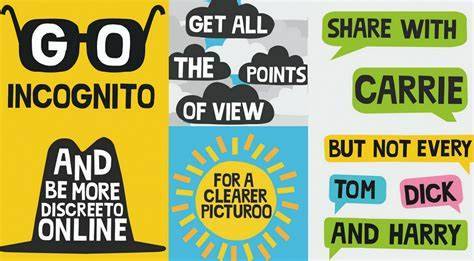
The Rise of Social Media in Public Health
Social Media's Transformative Role in Public Health
Social media platforms like Facebook, Twitter, and Instagram have become indispensable tools for public health organisations. They allow for mass communication, instant updates, and the ability to reach a diverse audience. These platforms enable health campaigns to engage with the public like never before (Kanchan & Gaidhane 2023).
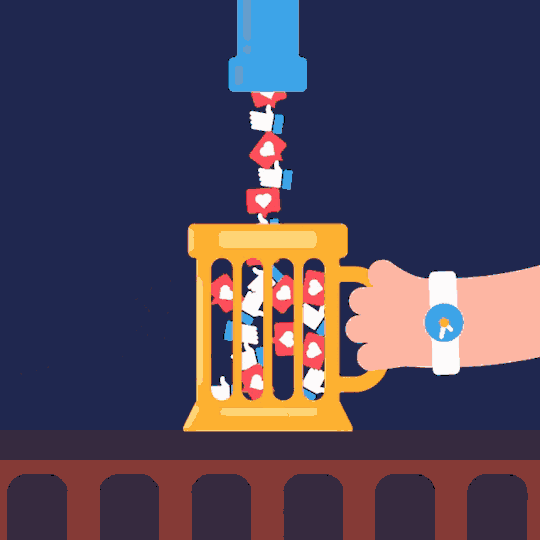
Informing the Public
Public health campaigns leverage social media to distribute important information. For example, during COVID-19 pandemic, platforms were used to convey updates on infection rates, vaccine distribution, and safety guidelines. However, the e1fectiveness of these campaigns is not solely dependent on the information they provide but on how they engage the public (Chen & Wang 2021).

One-Way Communication: The Challenges
Broadcasting Messages
Public health campaigns on social media often resemble traditional advertising. They focus on broadcasting messages to a wide audience, which can be seen as a one-way communication approach. In this model, information flows from the campaign to the public without much room for interaction (Kapur 2018).

Lack of Engagement
One of the key challenges is the lack of genuine interaction. Many campaigns post content without actively encouraging comments or questions. This creates a sense of passivity, where the public is expected to receive information but not actively engage with it (Ruler 2018).

The Echo Chamber Effect
Another concern is the echo chamber effect, where campaigns target individuals who already agree with the message. This can reinforce existing or change the minds of those who hpld different views (Ma 2022).

Transitioning to Two-Way Communication
Interactive Content
To move away from one-way communication, public health campaigns needs to create interactive content. Polls, surveys, and quizzes can encourage users to participate actively. For instance, campaign on smoking cessation could share a quiz that assesses a user's readiness to quit and offers personalized advice (Weheba & Kader 2007).

Encouraging Questions and Feedback
Campaigns can also actively encourage users to ask questions and provide feedback. They can dedicate time for Q&A sessions or open forums where experts respond to inquiries. This approach not only informs but also fosters engagement

Incorporating Storytelling
Stories have a unique power to humanize public health issues. Sharing personal experiences, survivor stories, or testimonials can make campaigns relatable and encourage users to share their own stories and concerns.

Case Studies in Meaningful Conversations
The "Know Your Lemons" Breast Cancer Campaign
The "Know Your Lemons" campaign effectively utilizes two-way communication. It educates women about breast health through a conversation starter: a set of lemons representing different breast abnormalities. This interactive approach empowers women to ask questions, share concerns, and engage with the campaign's message actively (Yen et.al 2021).

The CDC's COVID-19 Twitter Chats
The Centres for Disease Control and Prevention (CDC) conducted Twitter chats during the pandemic. They provided a platform for experts to address public concerns and answer questions in real-time. These chats transformed their Twitter feed into a place for dialogue and information exchange (Lyu & Luli 2021).

The Balance: When One-Way Communication Is Appropriate
While striving for two-way communication is crucial, it's important to recognize that not all public health campaigns are suited for extensive conversation.
Emergency information
In crisis situations, such as natural disasters or disease outbreaks, rapid dissemination of information is paramount. During these times, one-way communication may be more appropriate to ensure that the public receives vital instructions without delay (Adu-Oppong 2014).

Factual information
When sharing straightforward, factual information like vaccination schedules, it may be more efficient to maintain one-way communication. Nevertheless, campaigns can always encourage users to seek more information through resources or helplines.

Conclusion
Public health campaigns on social media have the potential to be more than just one-way communication. They can foster meaningful conversations, educate the public, and create a sense of shared responsibility. However, to achieve this, campaigns need to actively engage with their audience, encourage questions, and embrace interactive content. By striking a balance between one-way communication and dialogue, public health campaigns can maximize their impact and effectively serve the public interest. In an age where misinformation and fear can spread rapidly, social media can be a powerful force for good when harnessed effectively.

References
Adu-Oppong 2014, 'Communication in the workplace: Guidelines for improving effectiveness', Global Institute of Research & Education, vol. 3, no. 5, viewed 24 October 2023, <https://www.researchgate.net/publication/304782482_COMMUNICATION_IN_THE_WORKPLACE_GUIDELINES_FOR_IMPROVING_EFFECTIVENESS>.
Chen, J & Wang, Y 2021, 'Social media use for health purposes: Systematic review', Journal of Media Internet Research, vol. 23, no. 6, viewed 23 October 2023, <https://www.ncbi.nlm.nih.gov/pmc/articles/PMC8156131/>.
Kanchan, S & Gaidhane, A 2023, 'Social media role and its impact on public health: A narrative review', Cureus, vol. 15, no. 1, viewed 23 October 2023, <https://www.ncbi.nlm.nih.gov/pmc/articles/PMC9925030/>.
Kapur, R 2019, Barriers to effective communication, ResearchGate, viewed 23 October 2023, <https://www.researchgate.net/publication/323794732_Barriers_to_Effective_Communication>.
Lyu, JC & Luli, GK 2021, 'Understanding the public discussion about the centers for disease control and prevention during the COVID-19 pandemic using Twitter data: Text mining analysis study', J Med Internet Res, 9 February, viewed 24 October 2023, <https://pubmed.ncbi.nlm.nih.gov/33497351/>.
Ma, Y 2022, 'Role of communication strategies in organizational commitment, mediating role of faculty engagement: Evidence from English language teachers', Frontiers in Psychology, 22 June, viewed 23 October 2023, <https://www.ncbi.nlm.nih.gov/pmc/articles/PMC9257226/>.
Ruler, BV 2018, 'Communication theory: An underrated pillar on which strategic communication rests', International Journal of Strategic Communication, vol. 12, no. 4, viewed 23 October 2023, <https://www.tandfonline.com/doi/full/10.1080/1553118X.2018.1452240>.
Weheba, D & Kader, MA 2007, 'The impact of communication in teaching: A two-way communication approach', Tourismos: An International Multidisciplinary Journal of Tourism, vol. 2, no. 1, viewed 23 October 2023, <https://www.researchgate.net/publication/47716235_The_impact_of_communication_in_teaching_A_two-way_communication_approach>.
Yen, MCM, Islam, T, Ellsworth-Beaumont, C, Dhillon, SK, Ganggayah, MD & Taib, NA 2021, 'The "Know your Lemons" tools: A strategy to improve breast cancer warning signs recognition in Malaysia', Journal of Education and Health Promotion, 29 July, viewed 24 October 2023, <https://www.ncbi.nlm.nih.gov/pmc/articles/PMC10506761/>.
#week7#MDA20009#PublicHealth#SocialMediaCampaign#HealthCommunication#OnlineHealthCampaign#HealthAwareness
1 note
·
View note
Text
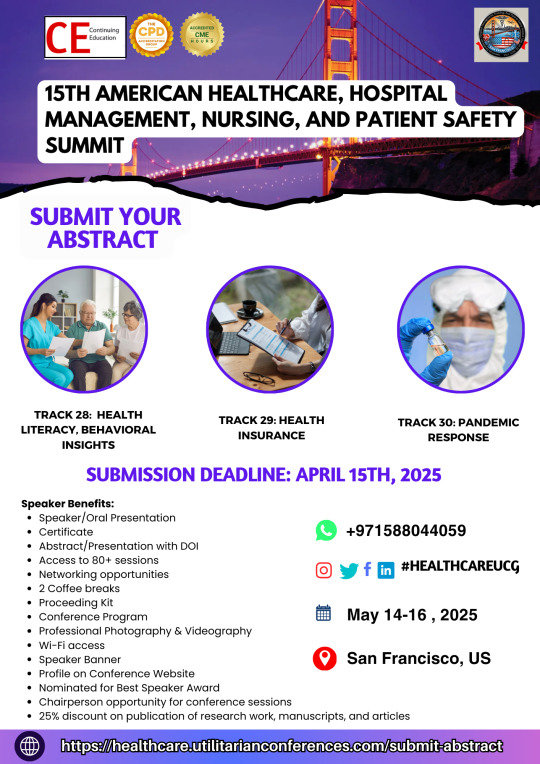
SUBMIT YOUR ABSTRACT Track 28: Health literacy, Behavioral insights , Track 29: Health Insurance, Track 30: Pandemic Response 15th American Healthcare, Hospital Management, Nursing, and Patient Safety Summit May 14–16, 2025 | San Francisco, CA | CE/CME/CPD Accredited Explore the latest innovations in healthcare, with a focus on cybersecurity and patient safety. Present your research, earn continuing education credits, and connect with healthcare leaders from around the world. Submission deadline: April 15th, 2025 Submit your abstract here: https://healthcare.utilitarianconferences.com/submit-abstract
#Healthcare#HealthLiteracy#BehavioralInsights#HealthInsurance#PandemicResponse#PublicHealth#HealthEquity#HealthCommunication#RiskPerception#HealthBehavior#VaccineAwareness#AccessToCare#CrisisManagement#HealthPolicy#PreventiveCare#GlobalHealth
0 notes
Text

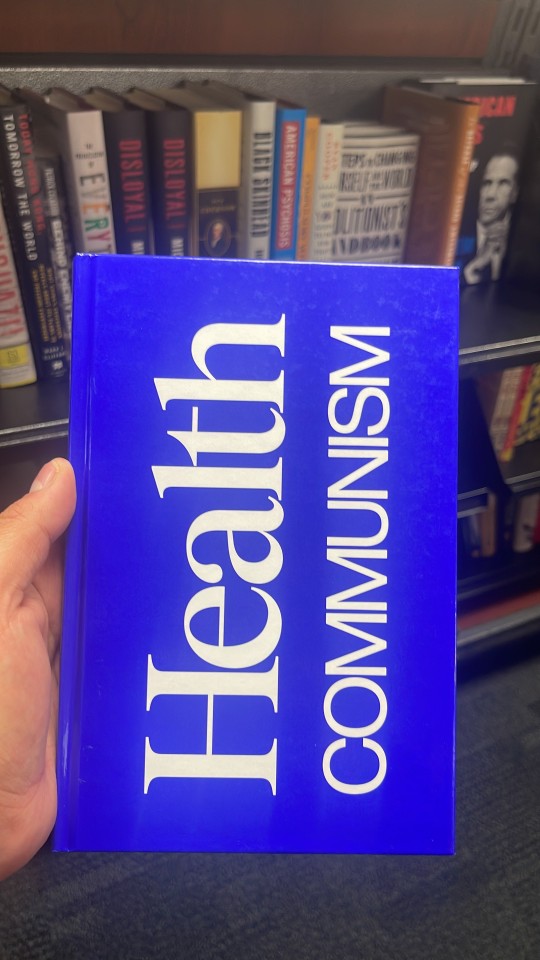

31 October 2023.
I didn't know what to write here. . Today, I woke up at 09:00 am. It was supposed to be a very productive day. I was so tired and filled at the same time with so much energy. I took a public bike in front of my building and just rode at the national mall. The weather was not so good, and I felt the cold in my legs (I was wearing tiny sports shorts and a black hoodie), but I didn't care about it, I rode till I arrived at the Georgetown main campus.
Georgetown's main campus is in the most beautiful area of Washington, D.C. The zone is full of excellent coffees, stores of used books, and gay hipsters: the promised paradise. I bought falafel as my lunch and entered the main campus. There, I wasted some money on two beautiful and warm hoodies. Then, at the Barnes and Noble bookstore, I discovered a fascinating book: "Health Communism." In the beginning, I was not convinced about buying it. I'll be here for just 10 months and want to avoid carrying those books back to my country. But I read the first page, and it was absolutely amazing. After all this time, one book makes great questions on health issues from a philosophical view. So I found it on a strange webpage in "pub" format. I would probably write more about this book and its ideas. Then I returned to my area, on the electric bike this time. It took me about 30 minutes, and I paid about 3 dollars for that ride.
My friend from India, Udbhav, invited me to go to the theatre. I'll meet him outside of McDounagh Hall. The weather was freezing. On our way to the theatre, we stopped at his apartment because he forgot to feed his cat, Cindy. We realize that Cindy is probably sick because she threw up all the food. We watched a French movie named "Anatomy of a Fall," it was terrific, the premise is the murder (?) of the main character's husband. The film shows the complexity of marriages in the writer's life, complex relationships, and power between men and women (in this case, the emphasis was on the side of the woman, in my view). We had the opportunity to watch a complete criminal trial of murder. The lawyer and the prosecutor were fascinating. They connected a lot of isolated facts and made the three hours of the movie interesting. Both of us liked the movie so much. There was a promise about going together to other news movies. I like that guy, who also is a writer.
2 notes
·
View notes
Text
Real Talk: Why Blood Sugar Balance Matters (And How Gluco Ally Helps)
🚨 Did you know unstable blood sugar can cause fatigue, cravings, and mood swings?
Here’s what you can do — and why Gluco Ally should be part of your toolkit:
✅ Stabilize sugar levels naturally ✅ Boost energy without crashes ✅ Support metabolic efficiency ✅ Feel more focused daily
💊 Gluco Ally isn’t just a supplement — it’s a lifestyle ally. With botanical ingredients like cinnamon bark, bitter melon, and chromium, it helps your body regulate sugar the natural way.
📲 Tap here to get the full story: https://glucually.us/
🫶 Stay balanced. Stay energized.

Related reads
. How Gluco Ally Supports Your Body Naturally: A Complete Wellness Approach
. Success Stories: How Gluco Ally Changed My Health
. How Gluco Ally Helps Balance Blood Sugar Without Harmful Side Effects
. Gluco Ally: The Natural Blood Sugar Support You’ve Been Waiting For
. What Is Gluco Ally & Why Everyone's Talking About It
. Gluco Ally: Your Ultimate Companion in Blood Sugar Management
0 notes
Text
Reach Your Weight Loss Goals with Mitolyn

Calling all weight loss warriors! Are you tired of trying countless diets and workouts with no results? Say hello to Mitolyn - the ultimate weight loss supplement that will help you reach your goals. 💪Formulated with natural ingredients and backed by science, Mitolyn is designed to boost your metabolism, reduce cravings, and increase energy levels. 💊Start your journey towards a healthier and happier you today with Mitolyn. Don't wait any longer, get yours now!
https://mitolynherb.shop/
#health & fitness#Mitolyn#WeightLossGoals#HealthyLiving#mitolyn#healthyliving#wellnessjourney#naturalremedies#vitamins#supplements#selfcare#energylift#healthychoices#mindandbody#fitnessmotivation#nutritiontips#wellbeing#holistichealth#liveyourbestlife#diyhealth#stayinspired#boostyourenergy#healthcommunity
0 notes
Text
Episode. 72: Nature Walk with Dr. Ritchie Shoemaker | BioNexus Health Podcast
youtube
In this special podcast episode of the BioNexus Health Podcast, Dr. Jody A. Dashaw leads us to Pocomoke City, Maryland, for a barbecue to celebrate Dr. Shoemaker, one of the trailblazers of research on biotoxin illness. Dr. Dashaw and certified physicians and practitioners walk along the local nature trail, reminiscing about its ecosystem and its healing relationship. This episode also addresses integrative medicine and healing from diseases such as mold biotoxin illness and Lyme disease. Tune in for a glimpse of this uplifting day honoring environmental health and the legacy of Dr. Shoemaker.
#bionexushealth#drjodydashaw#biotoxinillness#moldillness#integrativemedicine#chronicillness#lymedisease#environmentalhealth#drshoemaker#naturehealing#healthpodcast#bioherbals#pocomokecity#healthcommunity#healingjourney#Youtube
0 notes
Text
The Power of Listening | Drawing Out Patient Stories for Better Outcomes | PT Pro Talk Podcast
youtube
In this thought-provoking video, a clinician shares insights into the crucial role of listening in therapy. Discover how the ability to truly hear and understand patients' stories can be the key to unlocking their own healing potential. Learn about the importance of creating a safe space for patients to share their experiences and find solutions within themselves.
#healthcare#patientcare#listening#educare#clinicians#medicalpractice#patientstories#empowerment#healthcommunication#Youtube
0 notes